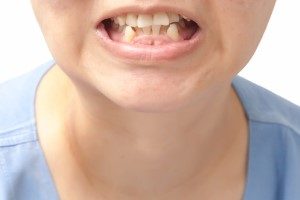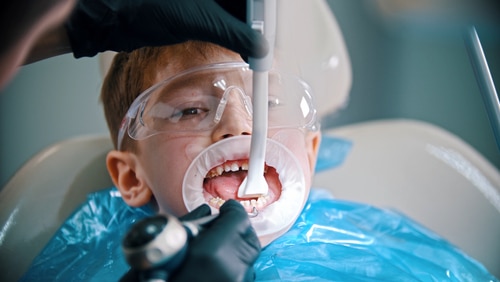Learn About The Common Childhood Dental Problems To Look Out For In Your Children
In the past, most parents waited till their children’s adult teeth came in before even considering scheduling an appointment with an orthodontist. However, we now know that early intervention is the key to most common childhood dental problems, including the possible complications that may arise later in life. Early intervention is preventive care. You need no explanation why preventive care is a better approach. We find that most orthodontic problems are much easier to correct sooner rather than later, and identifying and treating a problem now, before it has time to develop can save significant time and money down the line.
If you are unsure if your child is in need of orthodontic care, we want to make it easy to find out. Schedule a free no-obligation consultation with our experienced Buffalo orthodontists today. We have 5 convenient offices located throughout Western New York and we would love the opportunity to put a smile on your face. We also have virtual consultations available for those who are at high-risk or uncomfortable coming into our office. We have also enhanced our office protocols and safety measures to ensure our patients and staff remain safe. Contact us today to get started.
Download Our Free Early Treatment Orthodontics Guide
Discrepancies in growth and development may exist in the respective widths of the child’s upper and lower jaws. Ideally, the upper jaw accepts the lower jaw like a door frame accepts a door. Additionally, the upper teeth should bite down on the outside of the lower teeth. When biting all the way down, the full length of the lower front teeth should be visible. Furthermore, your child should not bite too deeply over the lower front teeth or have an opening in the front.
The way your bite fits together on the sides is the foundation of your bite. Just like the foundation of a house, it is the most important part of the bite. Even though it is the part nobody sees in the mirror when they smile. The front cusp of the upper molar should fit into the groove of the lower molar so that all the teeth fit together like bricks in a wall.
The most important relationship between the teeth is the fit of the upper canine tooth between the lower canine and the lower first premolar. This is because when your children shift their jaws from side to side when chewing food, or when they clench or grind at night, they glide off of those teeth and help protect their jaw joints. Not only does the fit matter for aesthetic reasons, but they are also important from a functional point of view.
Certain orthodontic conditions can be treated as early as 7 or 8 years old. Although the issues may not be corrected entirely at the time of treatment, early treatment will guide the growth and development of your children’s jaws and teeth so they will not require orthodontic treatment later in life. In fact, early orthodontic treatment can drastically reduce the amount of treatment that a child needs to undergo in his/her lifetime.
Download Our Free Early Treatment Orthodontics Guide
As parents, it is important that you are aware of the signs you should be looking for in your children that precipitate the need for an orthodontic visit. The following are some very common childhood dental problems that children manifest. These can be corrected completely with early intervention. The following sections explain these problems and help you understand what signs you should look out for in your child.
Most Common Childhood Dental Problems We Treat
Crowded Teeth
 Children usually lose their baby teeth in the same order the teeth came in. If a patient does not lose baby teeth within what is considered the normal time frame and order, there are several issues that can require orthodontic intervention. Crowding of teeth may occur if the baby teeth are lost too soon. If baby teeth fall out too late, the permanent teeth may come in crowded and also be crooked. If a permanent tooth comes in before a baby tooth is lost, it can create crowding.
Children usually lose their baby teeth in the same order the teeth came in. If a patient does not lose baby teeth within what is considered the normal time frame and order, there are several issues that can require orthodontic intervention. Crowding of teeth may occur if the baby teeth are lost too soon. If baby teeth fall out too late, the permanent teeth may come in crowded and also be crooked. If a permanent tooth comes in before a baby tooth is lost, it can create crowding.
Although crowding isn’t an emergency, it is something that can affect the smile or bite of a child. If a child loses a tooth due to trauma or decay, early orthodontic treatment can include using a spacer to make sure that the permanent tooth comes in correctly. This is one of the most common childhood dental problems we encounter at our office.
Summary:
- Check for crowding of teeth by looking at your child’s upper and lower front teeth.
- If there is crowding in the upper and lower front adult teeth, it is likely to increase as more teeth try to come in.
Open Bites
 Prolonged thumb sucking can cause an open bite. Open bites are one of the most common childhood dental problems we see. An open bite is a term used to describe when the upper and lower teeth are unable to make physical contact with each other. An open bite is known as maxillary impaction. The objective of early orthodontic in such a case will be to correct the space between the front and back teeth when your child bites down.
Prolonged thumb sucking can cause an open bite. Open bites are one of the most common childhood dental problems we see. An open bite is a term used to describe when the upper and lower teeth are unable to make physical contact with each other. An open bite is known as maxillary impaction. The objective of early orthodontic in such a case will be to correct the space between the front and back teeth when your child bites down.
Sometimes an open bite corrects itself, but many times it can only be corrected with orthodontic care. In severe cases, surgical orthodontics might be the only way to correct the open bite. During surgery, bone from the upper jaw is removed and placed higher in order to help correct the problem. The lower jaw is repositioned as well.
Summary:
- Prolonged thumb-sucking can lead to an open bite – where the upper and lower teeth are unable to make physical contact.
- Severe underbites can require surgery if left untreated.
Overbites and Underbites
 An overbite occurs when the upper jaw is longer than the lower jaw. This is because of an underdeveloped lower jaw. An underbite occurs when the lower jaw is longer than the upper jaw. And this in turn is because of an underdeveloped upper jaw. Overbites and underbites do not always cause problems. Early orthodontic treatment involves taking x-rays and a mold to determine the cause of the misplaced bite. Then, treatment is customized for each child. Common signs to look out for are speech impediments and sinus problems.
An overbite occurs when the upper jaw is longer than the lower jaw. This is because of an underdeveloped lower jaw. An underbite occurs when the lower jaw is longer than the upper jaw. And this in turn is because of an underdeveloped upper jaw. Overbites and underbites do not always cause problems. Early orthodontic treatment involves taking x-rays and a mold to determine the cause of the misplaced bite. Then, treatment is customized for each child. Common signs to look out for are speech impediments and sinus problems.
Summary:
- Overbites and underbites are caused as a result of underdeveloped jaws.
- Signs you should look out for are speech and sinus problems.
Crossbites and Overjets
 The upper jaw behaves like a door frame that accepts a door closing into it. A small upper jaw might affect the way the lower jaw is able to close into it. If your child has such a jaw, it might develop into a crossbite. A unilateral crossbite is a problem any orthodontic will prefer to see prior to age 7. It is treated with a simple appliance that corrects the width of the upper jaw while allowing the lower jaw to re-center itself. It, therefore, contributes to more favorable future growth.
The upper jaw behaves like a door frame that accepts a door closing into it. A small upper jaw might affect the way the lower jaw is able to close into it. If your child has such a jaw, it might develop into a crossbite. A unilateral crossbite is a problem any orthodontic will prefer to see prior to age 7. It is treated with a simple appliance that corrects the width of the upper jaw while allowing the lower jaw to re-center itself. It, therefore, contributes to more favorable future growth.
A crossbite can be either anterior or posterior. Essentially, it means that when your child bites down, their teeth don’t properly align. A crossbite can cause dental problems and problems for your child’s self-esteem. It’s possible that an untreated crossbite can cause your child’s face to develop in an asymmetrical fashion. It can also cause gum disease and chronic pain in the jaw, neck and shoulders. A crossbite can be corrected with early orthodontic treatment and can save your child from a life full of chronic pain and low self-esteem.
Another one of the common childhood dental problems we see is a big overjet. An overjet is when the upper and lower central incisors overlap. This is another issue that has a better chance of being corrected if treated early. Starting treatment early gives your orthodontist the time needed to help the lower jaw grow forward or push the upper jaw back into a better position.
Summary:
- Crossbites and overjets are caused when the jaws and teeth are not aligned properly.
- Check to make sure if your child can close his/her mouth properly, with all the teeth fitting around each other.
If your child is displaying any of the above symptoms, bring them into one of our five Western New York offices for a free orthodontic screening with our doctors. Making a Healthy and Beautiful Smile.
Follow us on Facebook for our latest COVID-19 updates and orthodontic tips!

